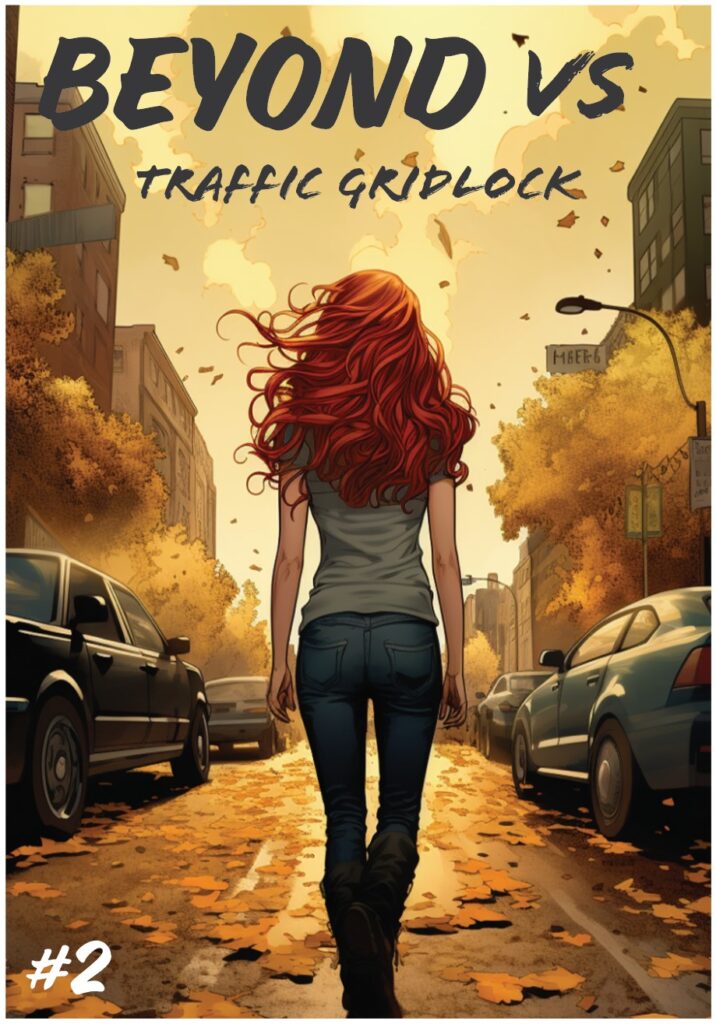Beyond VS #2 Show how harmful traffic gridlock can be
Imagine a typical day, looking out of your window at the bustling city. It might seem like just another day, but there’s more to the story. Traffic gridlock isn’t just an inconvenience; it’s a global issue with far-reaching consequences. Join Bey and OND as they understand the issues AND solutions available for traffic jams. Read the summary below or read the full PDF here.
The Dark Side of Gridlock
Environmental Impact: Idling vehicles in traffic jams lead to poor air quality, wasting billions of gallons of fuel annually.
Health Concerns: The polluted air affects both adults and children, causing diseases like cancer, asthma, and other heart and lung conditions.
Emergency Delays: Gridlocked roads can hinder emergency vehicles, potentially risking lives.
Economic Setbacks: Gridlock results in millions of wasted hours, affecting productivity and causing delays in goods and services delivery. It can also deter tourists and impact local businesses.

Is there a solution?
While traffic congestion might seem inevitable, there are solutions. Building more lanes might seem like the obvious answer, but it’s not always the most effective. Instead, cities can:
Promote Active Transportation: Encouraging people to bike, walk, or use electric scooters can reduce the number of cars on the road.
Redesign Cities: Making cities more walkable and bike-friendly can encourage alternative modes of transportation.
Improve Public Transportation: Reliable and efficient public transportation can significantly reduce the number of individual cars on the road.
Leverage Technology: Traffic signal coordination, sensors, cameras, and AI can optimize traffic flow and reduce congestion.

The Future of Transportation
The future holds promise with innovations like:
Autonomous Vehicles: Self-driving cars and buses can make transportation more efficient and safer.
AI Integration: Advanced AI can further optimize traffic management and autonomous vehicle coordination.
Alternative Modes: Manned drones and AR/VR technologies might revolutionize how we think about commuting.
Conclusion
While traffic gridlock is a pressing issue, it’s not insurmountable. By combining current solutions with future innovations, we can pave the way for smoother, more efficient roads. And who knows, maybe one day, we’ll all be on the ‘information highway’ instead!


